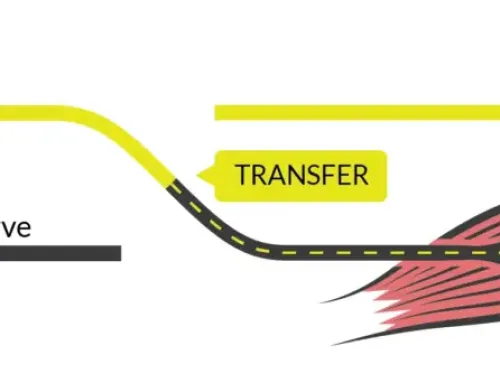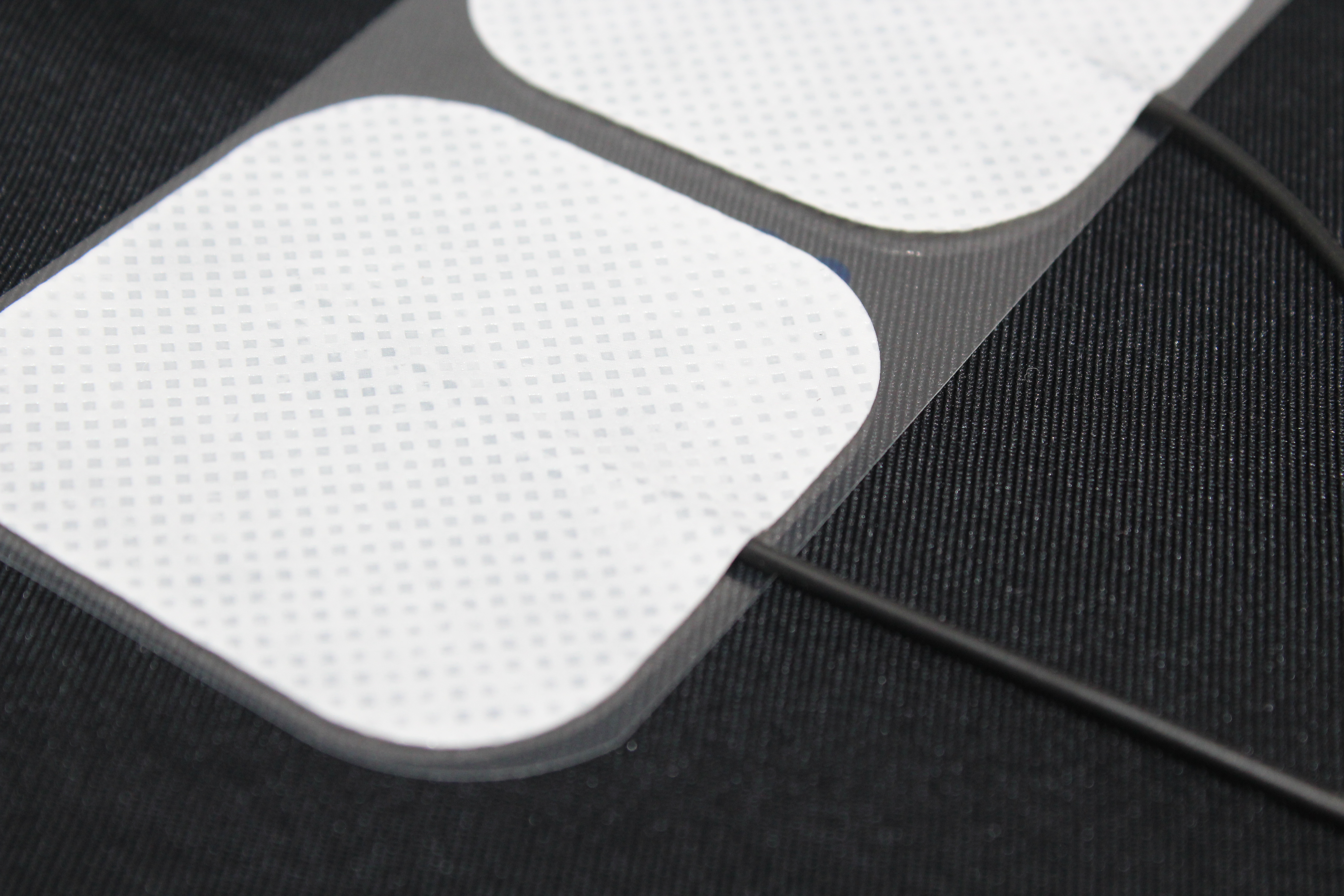Customer Spotlight Feature: Lesley Parrish, DPT and James Boyd III
Preventing injury in under-served arts athletes
Dance, like all sports, has a language of its own – one in which therapist Lesley Parrish has become fluent. Parrish has experienced first-hand that performing arts athletes are “underserved as an athletic population,” and her work seeks to treat and, more critically, give these athletes the tools and understanding to prevent injury. Her hands-on research and treatment of pre-professional and professional dancers has led her to develop some of her most effective training and injury prevention protocols with the assistance of biofeedback.
In many of her cases, the dancer doesn’t know where or that there even is significant weakness. Often, athletes are cleared to perform when pain decreases, but Parrish knows that protecting their long-term health is critical – particularly as professional dancers perform at high levels for long activity durations.
Patellofemoral conditions are a common condition in this group. Pain and injury here can be indicative of issues along the kinetic chain. If proper muscle activation is not achieved, problems can worsen. The key here is avoiding inward collapse of the knee by activating the musculature on both sides of the hip joint to stabilize the kinetic chain. “Valgus collapse or internal rotation about the knee is correlated to lateral patella subluxation, which is common in dance. If you don’t properly activate the proximal hip musculature, you will not have a stable platform to develop tension within the lower extremity. Oddly enough, dancers are taught to stay in “turn out,” which is a position where the hips are externally rotated. If there is not co-contraction between the adductors and abductors to create a pull/contract balance, stabilization at the hip proximally will not occur at the extremes of motion that dancers are required to perform,” Parrish says.
James Boyd, an instructor and professional dancer himself, notes that this kind of thinking opens up an opportunity for another dimension of education. He states, as an example, “It is correct to tell dancers to stay turned out, and this is also a direction easily followed. But we find that, in a nutshell, this simplicity causes the injury we are trying to avoid. A different dimension of teaching would share how and why the dancers would aim to remain turned out by constantly activating specific regions of the lower body. There are many layers [of awareness] to share with dancers – or anyone who can move! – of how to find the full potential of their movement. I think it is critical to bring this conversation to the main stage.”
Monitoring the fundamentals
To analyze a dancer’s natural activation patterns, Boyd and Parrish have decided to monitor two fundamental exercises:
- Single leg relevé and hold
- First position grand plié (see video below)
In both, sEMG sensors are placed on the glute medius and adductor magnus; dancers are instructed to enter posterior pelvic tilt as well as lift with quads and adductors. The goal is set low and dancers are cued to activate both muscles to the same level. If they are unable to perform these fundamental movement patterns with co-activation of the targeted muscle groups, it indicates an activation imbalance that is likely happening consistently for that dancer. Long term activation imbalance and instability around critical joints have been correlated to injuries of the lower extremity.
“Showing the athletes’ muscle activity with biofeedback visually changes alignment of the lower extremity in real time, and in some cases decreases pain in the overused joint.”
Lower chain impacts
One example of lower chain injury resulting from activation imbalance and/or weakness is sesamoiditis, or the inflammation of tendons that attach to the small bones in the foot, particularly common at the base of the big toe. This condition is caused specifically by valgus collapse into the joint, causing medial weight bearing on the metatarsal and creating pain, stress fractures, and other maladies.
Katey Fleming, a professional dancer and former Troy University Dancer, under Parrish’s care, assisted with the development and case study of an injury prevention protocol for sesamoiditis. Focusing on working from (actively engaging and monitoring) the proximal hip girdle, Fleming was able to relieve the pain in her toe by firing the appropriate muscles higher up the kinetic chain. This activation relieved damaging pressure by controlling and mitigating muscle forces throughout her lower extremities. On completing a 15-minute contralateral monitoring session with mTrigger, Fleming remarked, “it’s like I danced for 3 hours.”
Another issue of concern with activation imbalance is symmetry of bilateral activation. When taking a baseline sEMG measurement on the non-injured leg and setting the max voluntary contraction (MVC) threshold at the level of healthy MVC, Parrish reports that the majority of patients couldn’t get their injured levels up to match the activation of the healthy muscle. Asymmetries in strength and neuromuscular control can lead to long term avoidance, atrophy, and injury. Catching asymmetries early and training to combat them can prevent such outcomes.
STAY TUNED FOR PART 2: Breaking the Chain of Injury with Preventative Evaluation
|
Bio:
Lesley Parrish is a licensed physical therapist that has dedicated 18 years of clinical practice to the art of caring for individuals with orthopedic and sports medicine injuries. Her focus has been in sports medicine with specialization in movement assessment, injury prevention, and rehabilitation of orthopedic injuries. She predominantly works with professional and collegiate athletes. She has worked with athletes from the Tennessee Titans, the Lipscomb University Bison, the New York Giants, the Montreal Alouettes, and the New York Jets. She has worked alongside physicians from the Andrews Sports Medicine and Orthopedic Center and Tulane Institute of Sports Medicine. Dr. Parrish’s research interest focuses on movement assessment and injury prevention utilizing wearable technology to assess movement strategy to prevent injury and the return to activity. More recently, she has had the privilege to work alongside the Troy University Department of Theater and Dance to develop strengthening strategies with dancers at the pre-professional level. In collaboration with James Boyd, Troy University Dance Faculty, she has been able to assist in creating programs that identify and prevent injury by promoting proper movement strategies. She currently serves as adjunct faculty for the Troy University Athletic Training Program. She received her Bachelor’s degree from The University of Alabama and was awarded a Doctorate Degree in Physical Therapy from Belmont University.
References:
The relatively high number of injuries reported and the resulting loss of dance time support the need to introduce interventions to reduce the risk of injury in professional dancers. J Orthop Sports Phys Ther 2012;42(9):781–790. Epub 19 July 2012. doi:10.2519/jospt.2012.3893
“Ballet Dancer Injuries As Common, Severe As Athletic Injuries.” ScienceDaily. ScienceDaily, 12 October 2000. https://www.sciencedaily.com/releases/2000/10/001012074634.htm








Leave A Comment